| Midsize car; Built in USA |
|
|
| Good condition price range: $1,100 – $2,600* |
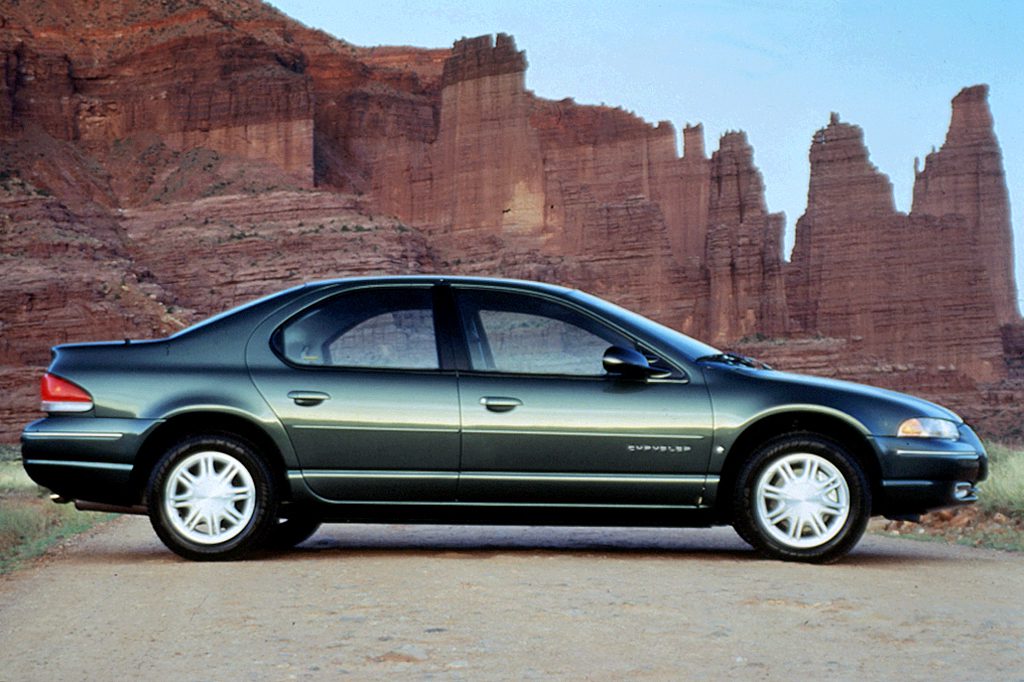
1996 Chrysler Cirrus LXi
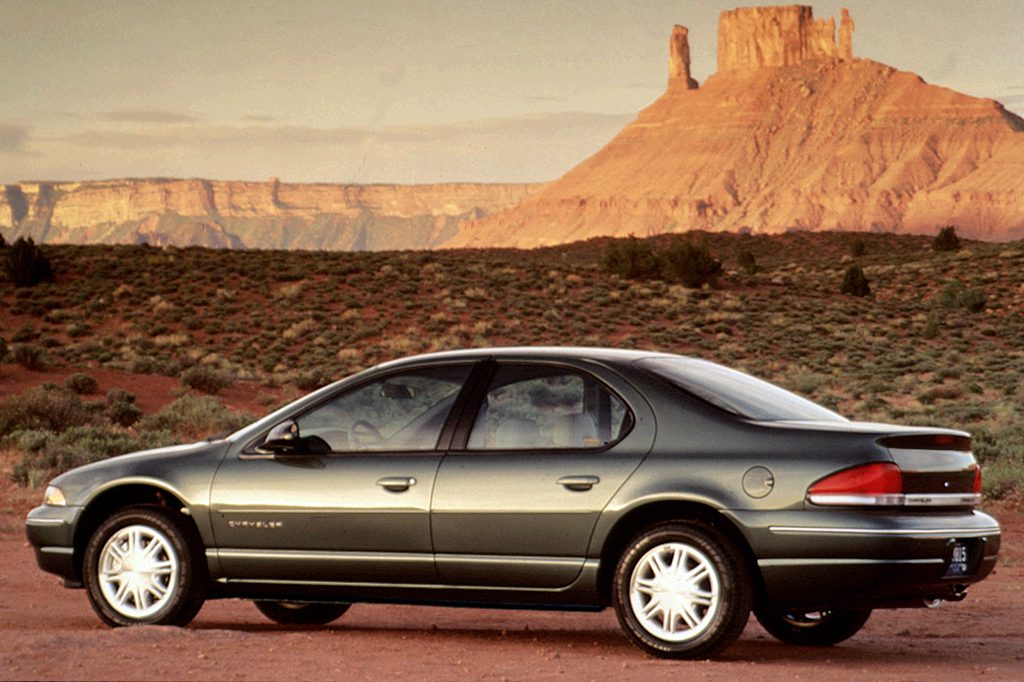
1995 Chrysler Cirrus LXi
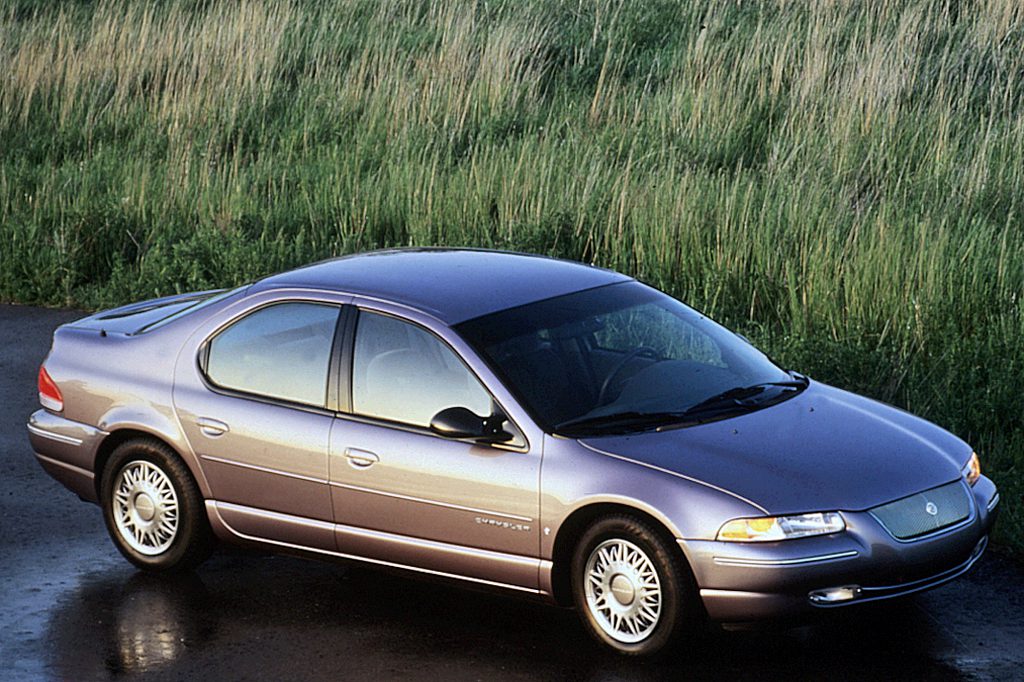
1996 Chrysler Cirrus LX
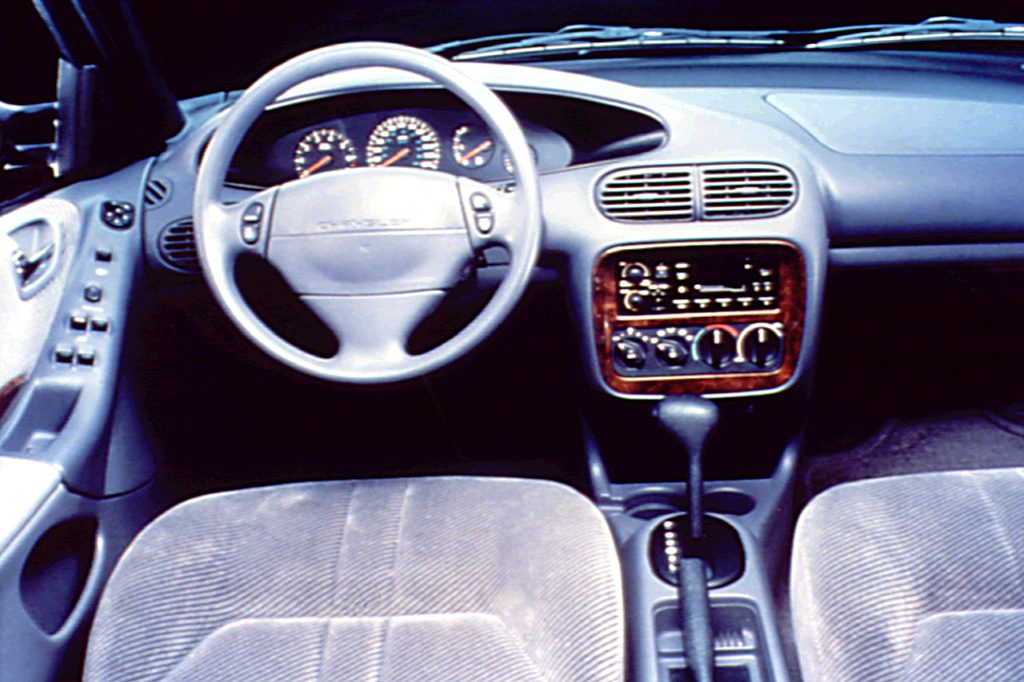
1995 Chrysler Cirrus interior
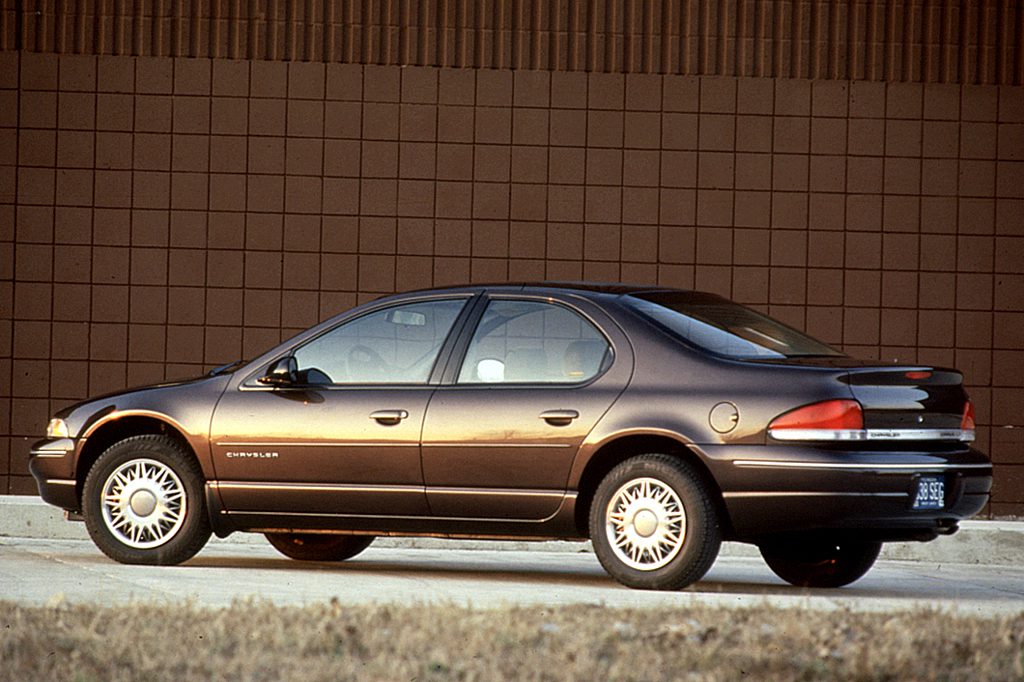
1997 Chrysler Cirrus LX
| Pros: |
|
| Cons: |
|
This highly capable family 4-door equals its Japanese competition in many areas, and beats them soundly for passenger and cargo space.
Overview
Replacing the long-lived LeBaron, Cirrus was the first of Chrysler’s new front-drive JA compact/mid-size sedans. The Dodge Stratus and the less-costly Plymouth Breeze were introduced a little later. Cirrus came in LX and LXi trim levels. Trendy “cab-forward” combined with a 108-inch wheelbase helped provide an unusually roomy interior. Power came from a new Mitsubishi 2.5-liter V6, with four valves per cylinder. Making 168 horsepower, it mated with an electronic 4-speed automatic transmission. Standard features included dual airbags, antilock brakes, air conditioning, a tilt steering wheel, AM/FM/cassette stereo, and power windows, mirrors, and door locks.
Yearly Updates
| 1996 Cirrus A Cirrus with a dual-cam 4-cylinder engine arrived for ’96. The Chrysler-built 2.4-liter 4-cylinder produced 150 horsepower and was standard in the LX. Like the V6 Cirrus, it came only with a 4-speed automatic transmission. The V6 was optional in LX sedans. Rear headrests were new this year. |
| 1997 Cirrus Changes were minimal for the Cirrus sedan’s third season. Interiors added a new center floor console with armrests and a storage bin. However, the 4-cylinder engine was now standard in both models, with V6 optional. |
| 1998 Cirrus Chrysler dropped both the 4-cylinder engine and LX trim level for the 1998 model year. |
| 1999 Cirrus Minor exterior changes included the addition of Chrysler’s winged grille badge and standard chrome wheels. A new extra was Sentry Key, a system that disables the ignition unless the proper key is used. |
| 2000 Cirrus Chrysler revived the 4-cylinder engine for use under Cirrus hoods, adding a 4-cylinder LX model to join the V6 LXi sedan. Aluminum wheels and an 8-speaker AM/FM cassette stereo became standard, instead of optional. Rear child seat anchorages were added to both models. |
